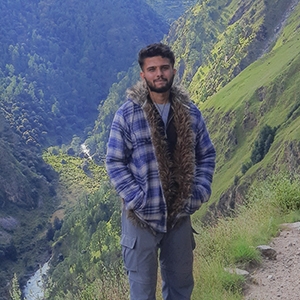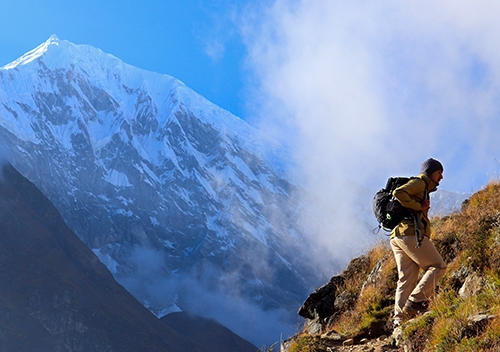When people hear the word “Nepal,” they often picture multicolored prayer flags dancing in the wind, the soothing chant of monasteries, and the giant, snow-covered peaks of the Himalayas. Nepal proudly maintains its title as the mountaineering capital of the world. Home to eight of the world’s fourteen 8,000-meter giants, alongside several beginner-friendly peaks, it attracts thousands of climbers each year, all pursuing summits, peace, and unforgettable stories in the core of the mountains.
You see a distant summit: sharp, icy, glorious, and something awakens inside you. A quiet determination takes hold. You don’t just want to see the panorama from the top; you want to earn it with your guts, your steps, and your fearlessness. The good news? You don’t need to be a pro mountaineer to chase that feeling. Nepal offers a unique category of mountains called “Trekking Peaks,” ranging from 5,500 to 6,500 meters (18,000 to 21,500 feet), which give adventurers a perfect entry into the world of Himalayan climbing.
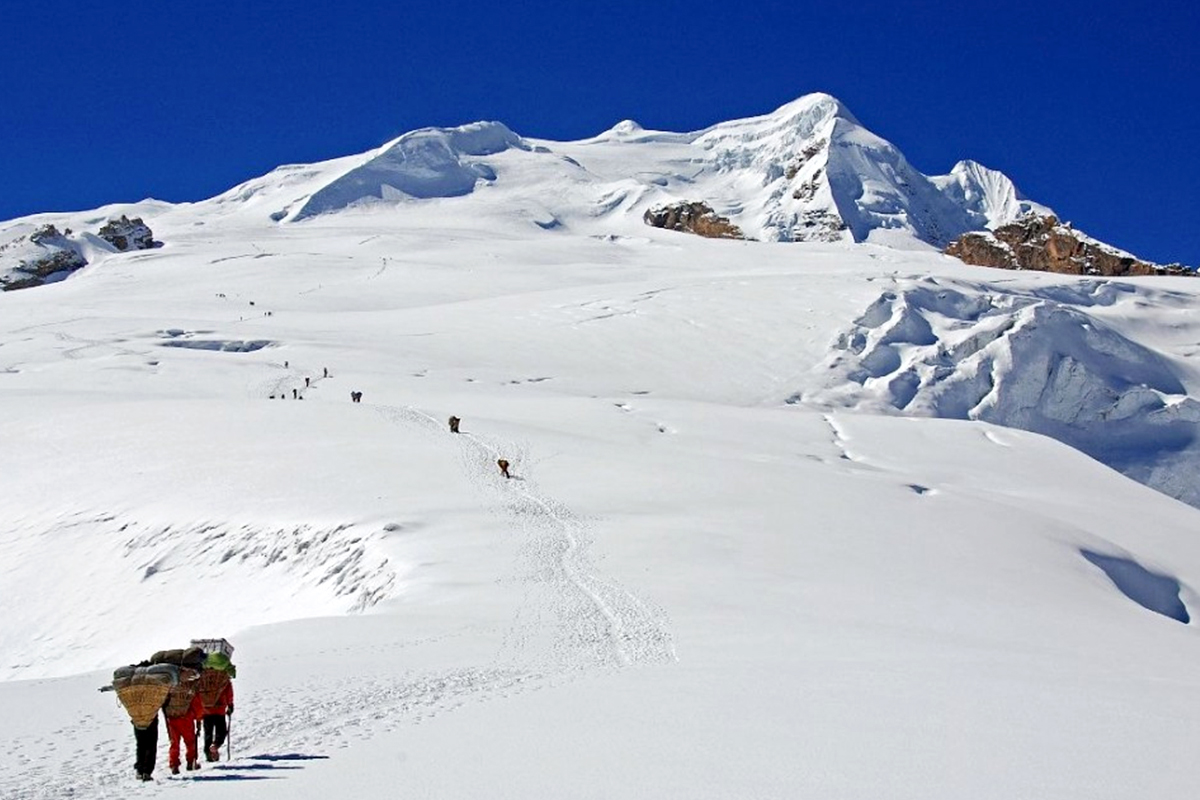
Let’s make one thing clear—“beginner-friendly” in the Himalayas doesn’t mean an easy weekend walk in the hills. Climbing here is a serious challenge. You’ll need excellent physical fitness, mental toughness, and the guidance of experienced climbing leaders. You’ll be using real mountaineering gear, crampons, an ice axe, and a harness. But if you’re a fit, motivated trekker ready to step up, these five peaks listed below offer the perfect starting point for high-altitude adventure at the top of the world.
In this informative blog, we'll guide you through the Top 6 beginner-friendly peaks to climb in Nepal, breaking down each one with helpful insights, climbing experience, view, difficulty level, and why it’s worth adding to your bucket list.
Before we dive into the peaks, remember these golden rules:
- Go with a guide: This is not the place for a solo "do-it-yourself" kind of adventure. A professional guiding company will handle permits, logistics, gear, food, and, most crucially, safety. Their understanding of the route, the weather, and acclimatization is what enables you to reach the top and return safely.
- Don’t compromise fitness: You need a healthy cardiovascular base. Consider running, cycling, swimming, and, most importantly, long hikes with a weighted pack, preferably on a hilly landscape. Your legs and lungs are your primary tools.
- Don’t Stress, Just Gear Up: You will need special mountaineering boots, crampons, an ice axe, a harness, a helmet, etc. The awesome news is that you can rent almost all of this high-quality gear in Kathmandu or on the trekking route, so you don't need to invest thousands of dollars upfront.
- Respect the altitude: Acclimatization is vital. The itineraries for these climbs are designed to let your body adapt gradually. Rushing is hazardous. Listen to your guide and your body.
Glad? Let’s explore the peaks that could be your first Himalayan summit.
Top 6 beginner-friendly trekking peaks in Nepal
Yala Peak (5,500m)
- Best for: The true beginner, a test of altitude without major technical burdens.
- Region: Langtang, Rasuwa
- Difficulty: Easy
- Duration: 12-14 days approx (including trek)
- Skill Required: Good hiking ability, comfortable with altitude. Basic crampon & camping skills may be needed, but are often taught on the spot.
Yala Peak is the most convenient and least technical peak on this list. It’s a wonderful way to experience the feeling of a Himalayan climb and use fundamental gear for the first time. The Langtang Valley itself is a captivating, culturally rich, and less-crowded alternative to the Everest region.
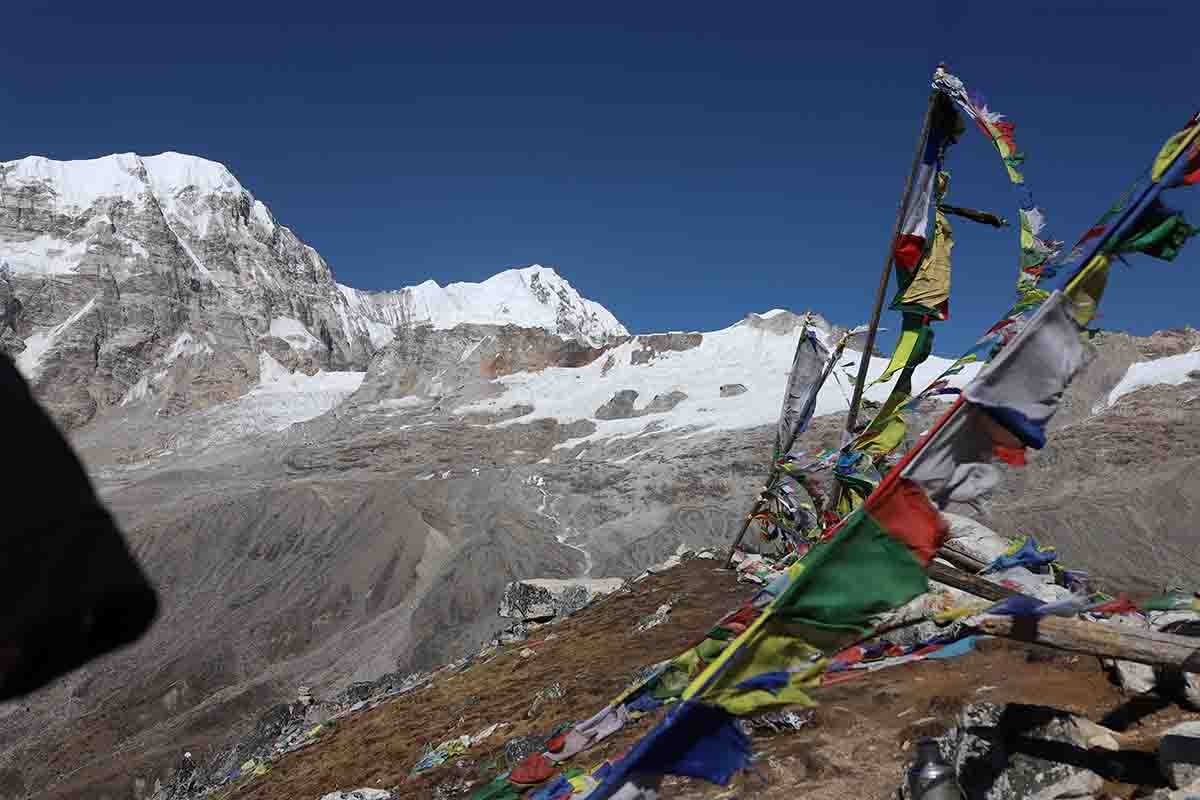
Your journey begins not with a flight, but with a rugged jeep/bus ride from Kathmandu into the Langtang National Park. The trek that follows is a beautiful journey through dense woods, alongside the roaring Langtang Khola, and into villages settled by the Tamang people, whose culture differs from that of the Khumbu region. You’ll set up at a high camp (Yala Peak Base Camp) around 4,800 meters. Summit day initiates in the pre-dawn darkness. Depending on the snow conditions, the final climb might be a specific, non-technical walk up over snow slopes, or it might require the use of an ice axe and crampons for safety. The final ridge is straightforward and leads to a small, rocky summit.
For a moderately low peak, the view is breathtaking. You’ll find yourself surrounded by huge Himalayan giants. The highlight is the mighty Shishapangma (8,027m)—the only 8,000m mountain that stands wholly within Tibet, rising just beyond the border. Alongside it, you’ll witness a spectacular panorama featuring peaks like Langtang Lirung, Dorje Lakpa, and Gangchempo.
Island Peak (Imja Tse) (6,189m)
- Best for: The first 6,000m peak experience
- Region: Everest Region (Imja Valley)
- Difficulty: Moderate (with technical sections)
- Duration: 14-18 days (often including EBC)
- Skills Required: Trustworthy fitness, basic glacier travel, and the ability to use an ascender (jumar) on a fixed rope (this is taught during a training day before the summit push).
Island Peak stands as Nepal’s most famous trekking peak, and it’s easy to say why. It offers an exceptional journey through the Khumbu Valley, taking you past historic places like Namche Bazaar and Tengboche, before leading you to a summit that’s both challenging and within reach. It’s the perfect blend of adventure trekking, rich Sherpa culture, and genuine Himalayan mountaineering.
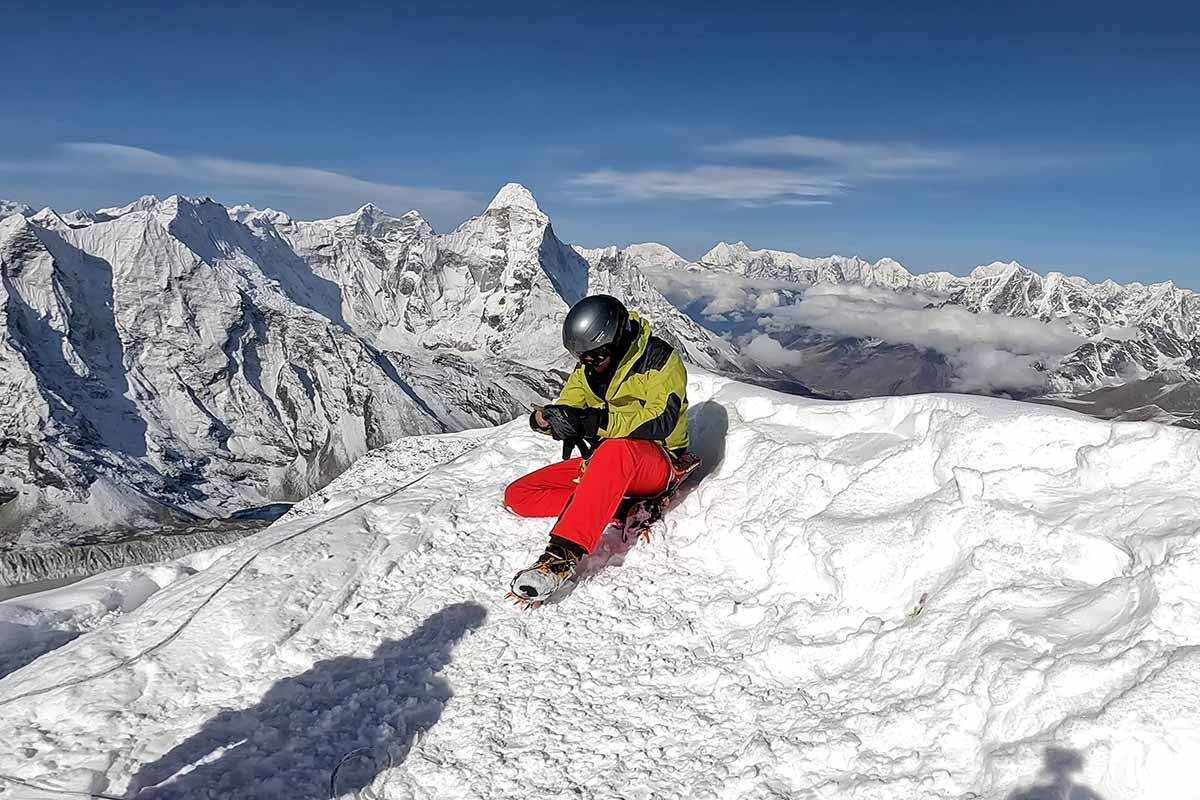
The adventure to Island Peak is a full-on journey, often combined with the renowned Everest Base Camp trek. After acclimatizing and exploring EBC, you’ll leave the major trail and head into the panoramic Imja Valley. The peak earned its title because, from Dingboche, it looks like an island rising from an ocean of ice.
The actual climb begins at Base Camp. Depending on your program, you’ll either move up to High Camp or push for the summit directly. On summit day, you’ll start by pushing up a rocky section before stepping onto the glacier (crampon point). From there, you’ll rope up with your guide/leader and cross crevassed ice in the silent darkness of early morning. The final challenge? A vertical, 150-meter hanger of ice and snow. Using a jumar and fixed rope set by your leader, you’ll climb your way to the top of this demanding section. It’s tough, no doubt, but the satisfaction is huge. Once past the headwall, an exposed cliff leads you to the narrow summit, with awesome views in every direction.
It’s truly unforgettable, you’ll find yourself right in the center of the Himalayan giants. The immense south face of Lhotse, the world’s fourth-highest mountain, stands dramatically above you, so near it feels almost within reach. From the summit, you’ll take in astonishing sights of Makalu, Ama Dablam, Baruntse, and a solid skyline filled with countless high peaks that characterize the Khumbu region.
Lobuche East (6,119m)
- Best for: The ambitious novice or someone with previous hill walking experience.
- Region: Everest region, Solukhumbu
- Difficulty: Moderate to a little technical
- Duration: 18-21 days approx. (often with EBC)
- Skills Required: Requires comfort on vertical snow and exposed heights. Experience with fixed ropes is important.
Lobuche East serves as an excellent "next step" after Island Peak, or a more challenging first 6,000er for those who feel convinced. It's technically more difficult than Mera Peak, great for skill development, and delivers a real feeling of mountaineering with its mixed terrain of rock, snow, and ice.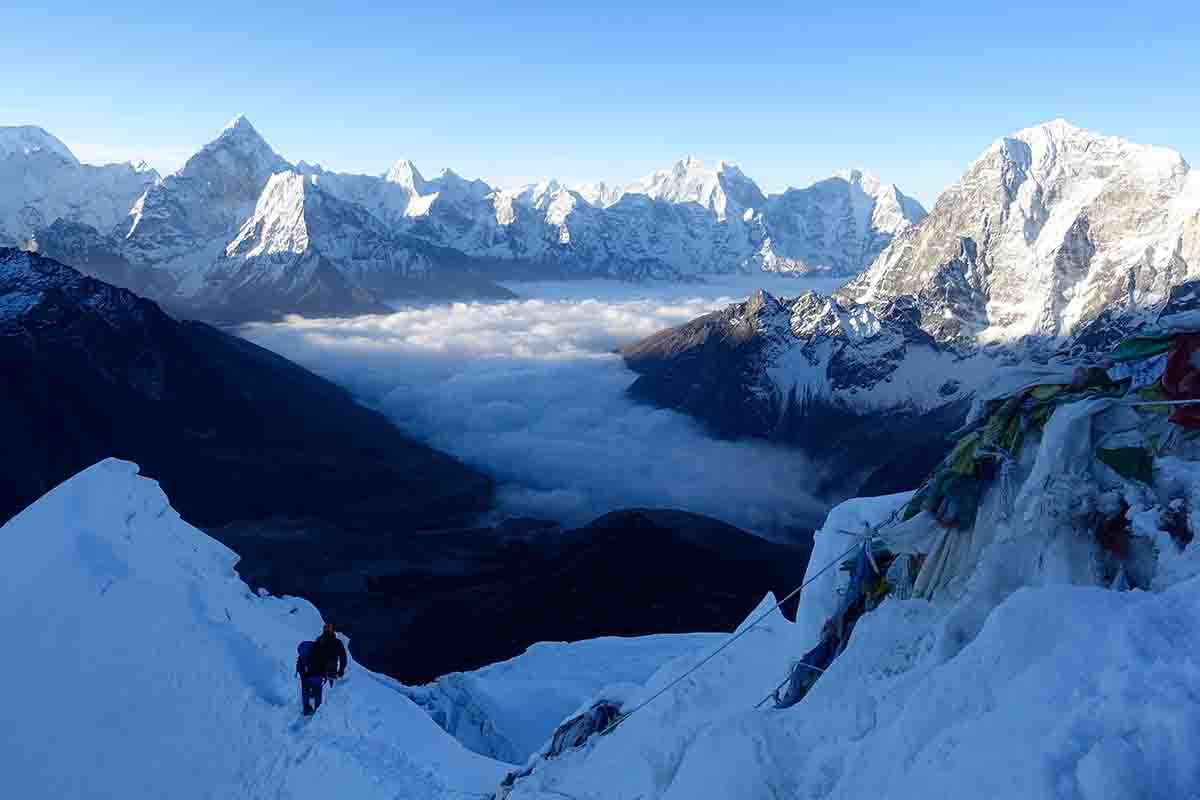
Like Island Peak, the climb/trek to Lobuche East follows the classic Everest Base Camp trail. The peak is prominently located just above the village of Lobuche. After installing a high camp, the summit day offers a series of thrilling challenges. You'll begin on rocky slabs and moraine before moving onto snow pitches. The ascent involves climbing more vertical snow sections, up to 45 degrees. You'll operate fixed ropes for safety on these sections. The final push involves navigating a wonderful, exposed summit ridge. This ridge is the highlight for many, offering exhilarating exposure and requiring careful footwork as you move towards the true summit. It feels less like a trek and more like a valid mountain climb.
The closeness to the Khumbu Glacier provides an excellent, close perspective. You get a striking, side-on view of the entire glacier crawling its way down from the Western Crown of Everest. You'll see Everest, Lhotse, Nuptse, and the iconic pyramid of Pumori in exquisite detail.
Pokalde Peak (Dolma Ri) (5,806m)
- Best for: A short, non-technical ascent that can be easily added to a high-pass trek/climb.
- Region: Everest (Khumbu)
- Difficulty: Easy to Moderate
- Duration: 15-17 days approx
- Skills Required: Confidence traversing on rocky, open terrain. No ice/snow skills are usually needed.
Pokalde delivers one of the quickest and most beginner-friendly climbs in the Khumbu region. Rather than navigating snowy sections or glaciers, you’ll take on a high-altitude rock traverse, making it a fantastic choice if you’re not quite ready to venture into crevasses or icy landscapes. Many trekkers include Pokalde as an additional challenge while completing the demanding Three Passes Trek.
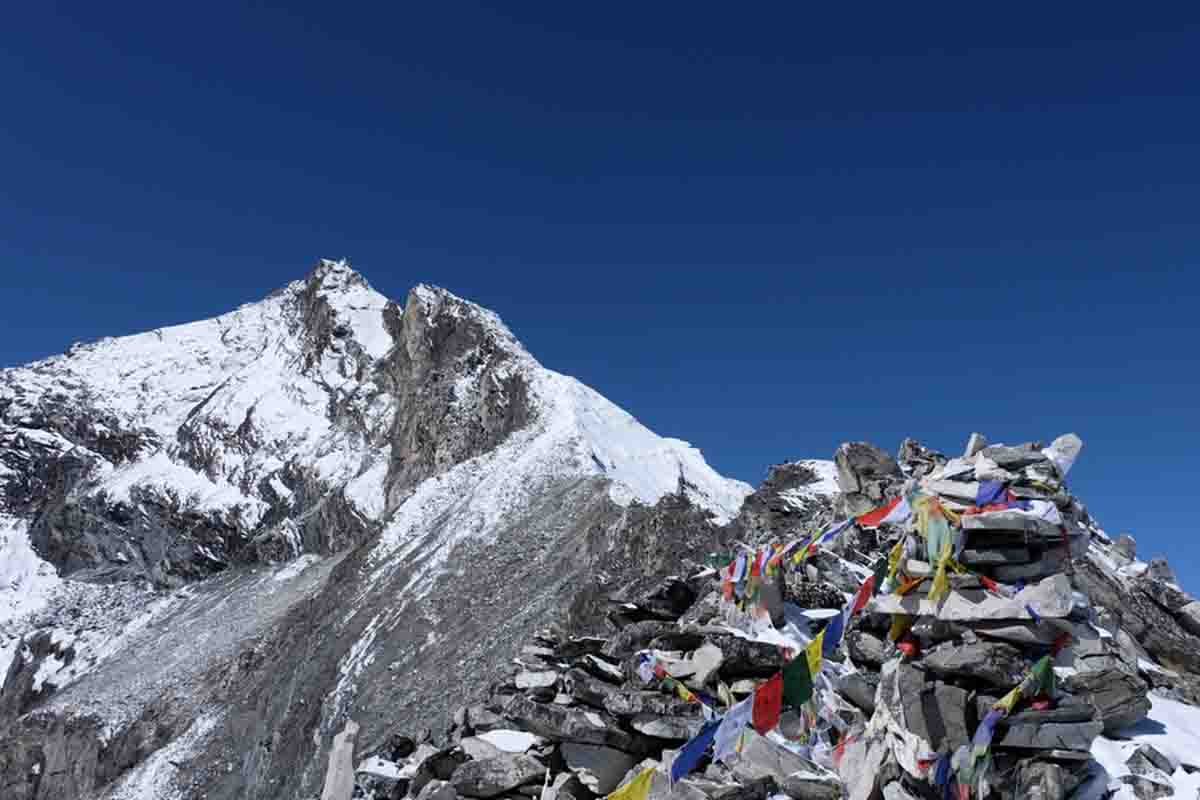
You can climb Pokalde either from the village of Dingboche or by crossing the Kongma La Pass (5,535m), one of the highest trekking passes in the Khumbu region. Most climbers complete the climb in a single day, beginning from a base camp near the pass. The route follows a stable traverse along a rocky cliff. While it’s not technically difficult, it does require a good comfort level with heights, mainly on loose sections and rocks. Since the route commonly has little to no ice, you likely won’t need crampons, unless situations are unusually severe. Its easy access and quick duration make Pokalde an ideal peak to complete a longer trek.
The view from the top is sensational, offering you a rare viewpoint from the south. You’ll stand surrounded by Himalayan giants, Makalu dominates the eastern skyline, while the immense southern faces of Nuptse and Lhotse extend across the north. Below Kongma La, jaw-dropping glacial lakes add a vivid burst of color to the rough, rocky terrain, making the entire scene feel dreamlike.
Mera Peak (6,476m)
- Best for: Those seeking a high-altitude experience with epic views, without major technical difficulty.
- Region: Hinku Valley (between Everest and Makalu region)
- Difficulty: Moderate
- Duration: 18-20 days approx
- Skill Required: Excellent endurance and acclimatization are essential. Basic glacier travel skills are required, but the route avoids major hazards.
Mera Peak holds the tag of Nepal’s highest trekking peak. Although its altitude is harsh, the climb itself isn’t technically difficult. The route follows a gradual, ongoing ascent across a wide glacier, more of a snowy trek than a technical climb. What tests you is how well your body tolerates the thin air at intense altitude, making Mera an excellent goal for fit trekkers looking to push their boundaries.
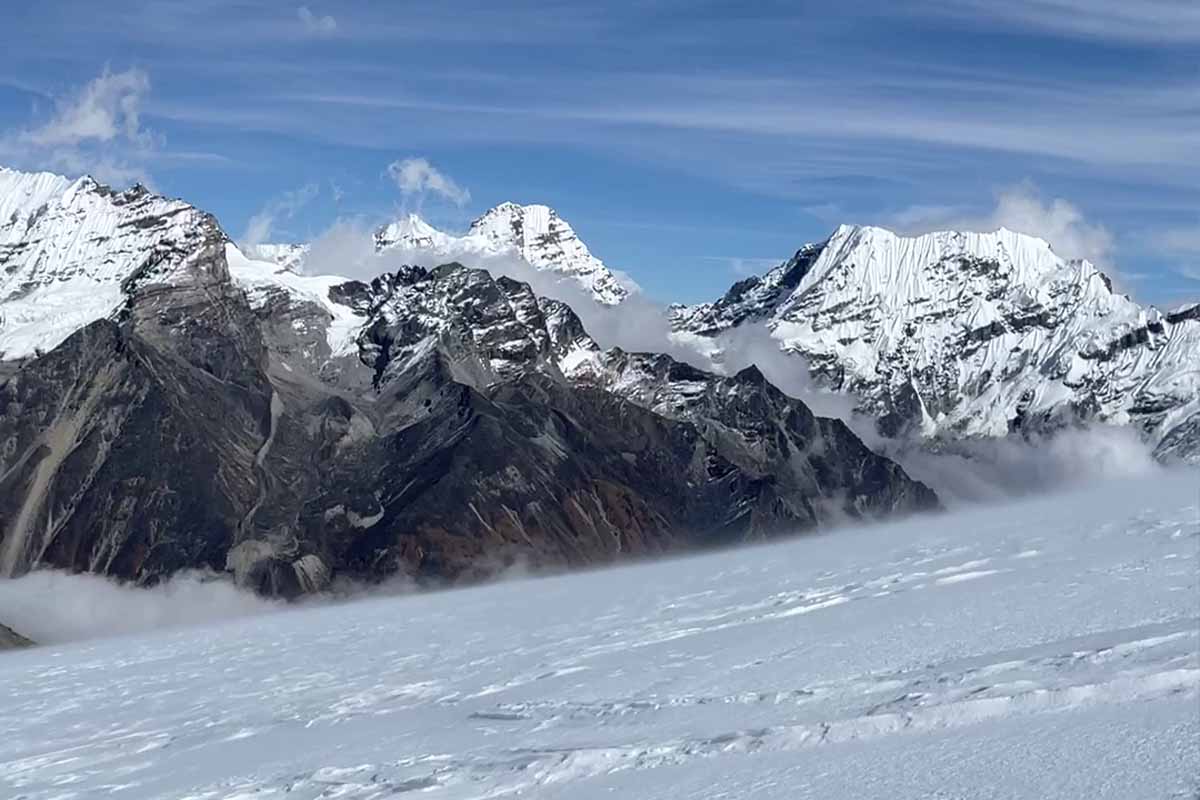
The route to Mera Peak takes you through a more fantastic, more remote part of the Himalayas compared to the occupied Everest Base Camp trail. After landing in Lukla, you’ll trek east and cross the Zatrwa La Pass, entering the pristine Hinku Valley. Over the next few days, you’ll trek through captivating forests of rhododendron and pine before reaching the high alpine location. The climb itself isn’t vertical or technically burdensome. From High Camp, which sits on a rocky edge at 5,800 meters, you’ll initiate your summit push. It’s a long, icy, and mentally tough journey across the glacier. Roped up for safety, you’ll move slowly, step by step, as the rising sun slowly lights up the giant Himalayan peaks around you. The last 30 meters bring you up a gently vertical snow crown to the summit, a moment that feels like you’re standing on top of the world.
Mera Peak’s most prominent reward lies at the summit, and the view is nothing short of mythical. From the top, you’ll witness one of the most astonishing panoramas in the whole of the Himalayas. Five of the world’s six tallest mountains- Everest, Lhotse, Cho Oyu, Makalu, and Kanchenjunga- stand high on the horizon. It’s a full 360-degree panorama of jaw-dropping peaks, glaciers, and ridgelines, a view so powerful it will stay with you for life.
Pisang Peak (6,091m)
- Best for: A Perfect stepping stone for future peaks in the Annapurna or Mustang region.
- Region: Annapurna (Pisang)
- Difficulty: Fairly Difficult
- Duration: 18-22 days approx (as part of the Annapurna Circuit)
- Skills Required: Prior experience with crampons and an ice axe is highly advised. Comfort on sustained, vertical snow and ice slopes (up to 50 degrees) is important. A high level of fitness is required.
Pisang Peak, situated in the stunning Annapurna region, presents a more challenging mountaineering experience for trekkers and climbers eager to elevate their skills. Although classified as a “trekking peak,” it is generally considered more difficult than Island Peak. Featuring extensive sections of steep snow and ice, Pisang is ideal for climbers with prior experience seeking to hone their technical skills in a high-altitude environment.
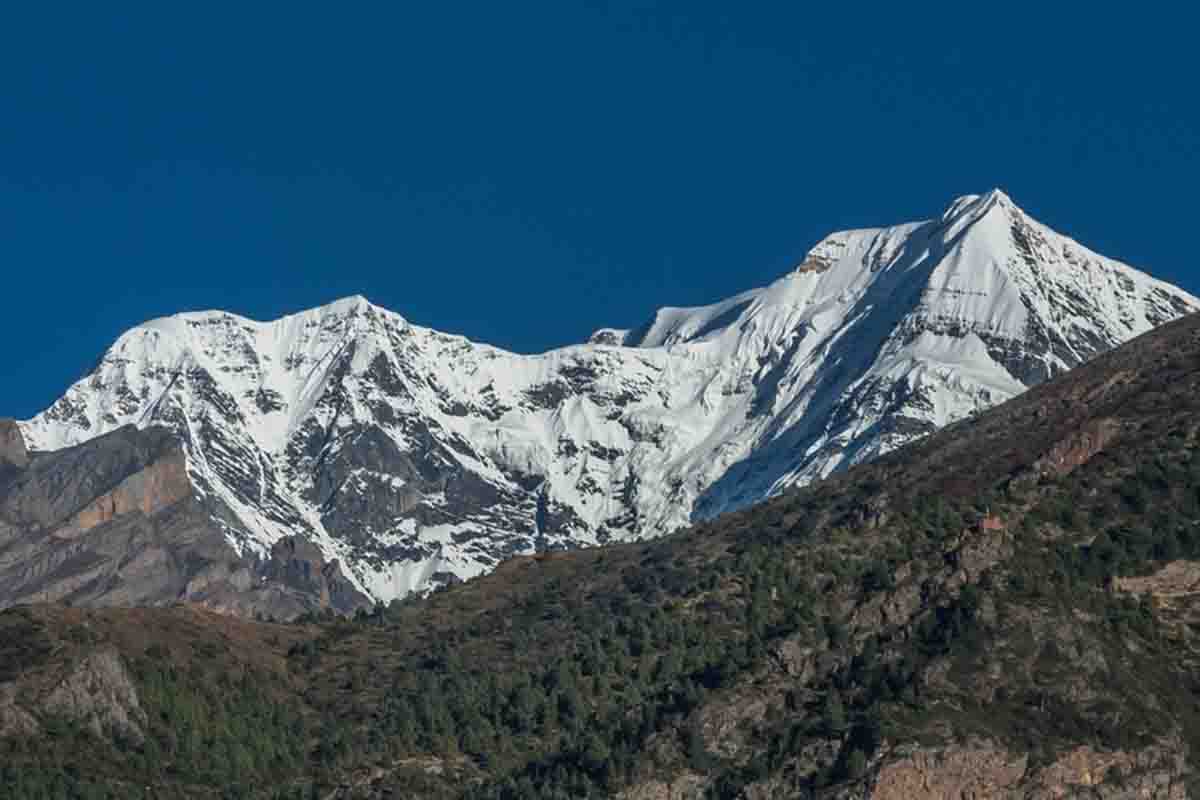
Your adventure initiates along the legendary Annapurna Circuit, a trek well-known for its dramatic shifts in landscape. You’ll walk from lush, subtropical valleys into the dry, windy terrain of Manang, a zone that feels more Tibetan than Nepali. After acclimatizing in the picturesque village of Manang, you’ll break away from the main route and head toward Pisang Peak Base Camp. The climb itself is no joke. From High Camp, placed on a ridge around 5,400 meters, you’ll take on a long, merciless snow slope. Unlike the short summit push on Island Peak, this is a constant, steep climb that requires solid crampon technique and serious energy. The final push brings you up a sharp, exposed ridge that looks and feels alpine. This isn’t just trekking, it’s the authentic deal of mountaineering.
The scenery here is spectacular and unlike anything you’ll see in the Khumbu. You’ll stand face-to-face with the huge wall of the Annapurna massif, with Annapurna I, II, III, IV, and Gangapurna dominating the background. To the east, the immense presence of Manaslu rises into view. As you look down, the dry, wild Manang Valley stretches out below; a unique distinction of brown, empty terrain set against the bright, snow-covered peaks of the Annapurnas.
In the end
Choosing your first Himalayan peak is an intensely personal determination. Do you want the iconic trip to Island Peak? The raw, high-altitude challenge of Mera? The convenient introduction of Yala Peak, or the technical test of Pisang Peak?
These 6 beginner-friendly peaks in Nepal offer you a secure and deep introduction to the world of high-altitude mountaineering. No matter which peak you prefer, one thing is certain: when you reach the summit and breathe in that thin, icy air, you’ll be staring out at a sight most people will never experience. The exhaustion will melt away, replaced by an in-depth sense of fulfillment and wonder. In that moment, you won’t just be a trekker anymore, you’ll be a climber. And from then on, the Himalayas will always hold a memorable place in your heart.
The Himalayas are calling, which peak will you answer? Contact us now to make your dream come true.









